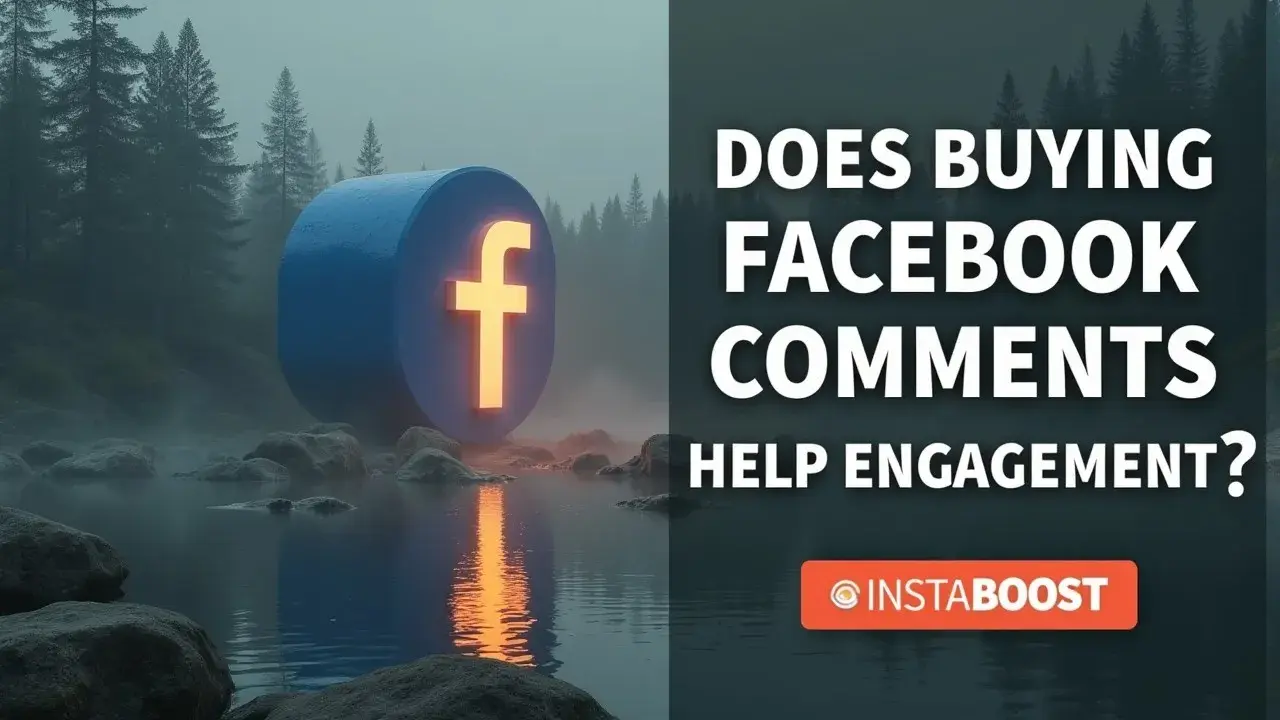{$te}
The Real Lever Behind “Bought” Conversation
Buying Facebook comments sits in a gray zone that’s less about trickery and more about shaping first impressions. Platforms reward signs of real dialogue, and a post that opens with a few relevant remarks and questions tends to make people pause. Replies stack up, and the algorithm reads that momentum as worth distributing.
That lever works when the comments are on-brand, specific, and indistinguishable from how your audience actually talks – seeded questions that invite answers, not vague praise. The smart move is to work with reputable providers who deliver real, readable comments, then pair them with disciplined timing at your peak windows, creator collabs that send warm traffic, and light moderation so authentic voices stay visible. Keep a clean testing loop. Run side-by-side posts, track reply chains, hide low-quality remarks quickly, and measure week-over-week lift in meaningful interactions rather than raw counts. If your goal is engagement rate growth, a measured burst of credible social proof can accelerate it.
If you’re chasing sales, match the prompts to intent with product questions and use cases so threads feed discovery. The bigger risk is muddy signals, not penalties – spammy or off-tone remarks can suppress reach because they trigger hides and keyword filters.
The fix is straightforward. Set comment filters thoughtfully, cue your team to respond within the first hour, and treat purchased comments as an ignition source, not the fuel; tools and workflows matter more than volume, and veteran managers keep a shortlist of tools to grow Facebook effectively that slots into their playbook without drawing attention. Used this way, buying Facebook comments helps engagement by priming the room for conversation, and then your content, replies, and targeted promotion carry it.
The fix is straightforward. Set comment filters thoughtfully, cue your team to respond within the first hour, and treat purchased comments as an ignition source, not the fuel; tools and workflows matter more than volume, and veteran managers keep a shortlist of tools to grow Facebook effectively that slots into their playbook without drawing attention. Used this way, buying Facebook comments helps engagement by priming the room for conversation, and then your content, replies, and targeted promotion carry it.

Why Credibility Is the First Algorithm
The best advice I got was to slow down. I ignored it, then learned. Buying Facebook comments isn’t a shortcut to credibility by itself. It’s an amplifier when your baseline already looks real. The platform watches retention signals like how quickly threads get replies, whether people come back to the post, and if reactions and shares build alongside the back-and-forth. Seeded remarks can open the door, but the room has to feel lived-in with a consistent brand voice, real responses within minutes, and questions that invite follow-ups.
That’s where reputable providers matter. You want context-matching, human-written lines that mirror your audience’s cadence, not generic fluff that triggers “see fewer comments” filters. Pair that early momentum with creator collabs and targeted promotion to draw the right people, and treat any tactic to get more Facebook followers fast as something that only works if it harmonizes with the conversation already happening.
Then keep the loop tight by responding promptly, steering the thread, and logging outcomes in clean analytics so you can see whether bought comments lifted meaningful engagement or just surface noise. If you notice Facebook hiding comments, it usually points to a signal mismatch with timing, relevance, or low-quality phrasing. Adjust posting windows to when your core audience is active, tune moderation settings to avoid auto-hiding borderline language, and refine the prompts you seed so they nudge story-sharing, not canned praise. That reframes the lever. You’re not faking popularity. You’re priming discovery so real people feel invited to talk. Done this way, buying Facebook comments helps engagement because it aligns with how the feed weighs conversation quality – momentum that continues, not spikes that stall. Test in short cycles, track week-over-week comment depth and reply chains, and reinvest where the thread carries itself after the spark.
Alignment-First Planning: How to Use Bought Comments Without Faking It
Strategy should feel like alignment, not anxiety. Think of bought Facebook comments as a small spark inside a larger, honest fire – you’re engineering early momentum so your real audience has something to join. Start from a solid baseline with on-brand voice, a clear angle, and a post designed to invite replies. A specific question beats a generic prompt. Add a modest set of qualified, context-matched comments that sound like your audience – short, specific, a little imperfect. The goal is fit and timing, not volume.
Post in a known peak window, seed 3 – 7 relevant remarks in the first minutes, and be ready with fast, human replies from your account to turn those remarks into visible threads. Pair this with retention signals the algorithm favors, like save-worthy carousels, watchable clips, or a pinned clarification that keeps people reading, and keep paid nudges lightweight, whether that’s a small boost to a warm audience or choosing to buy Facebook likes for reels only when it supports a test you can measure. If you have budget, run a targeted promotion to warm segments and invite a creator collab that sparks authentic follow-up questions.
Bought comments simply prime the feed to look alive. Keep safeguards tight by using a reputable provider, staggering timestamps, varying tone, and avoiding repetitive emojis or keyword stuffing that can trigger spam filters or comment hiding. Measure like an operator by tracking comment depth, reply latency, and week-over-week engaged users instead of fixating on raw counts. If real comments get suppressed, check moderation settings and profanity filters so genuine conversation stays visible. The non-obvious edge is to align prompts to your next action, not just attention – ask for use cases, objections, or comparisons you can answer, and turn borrowed momentum into qualified discussion and measurable lift in click-throughs and saves.
The Hidden Friction That Makes Bought Comments Backfire
I almost convinced myself it was working. A dozen quick replies stacked up, the sentiment felt warm, and the thread looked busy. Then two things broke the spell. Time to the first real comment stretched past an hour, and the average length from actual followers dropped. That’s the tell. When bought Facebook comments crowd the top, they can squeeze the space where authentic replies breathe.
If you’re going to use them, treat them like scaffolding – temporary, minimal, and tuned to how your audience naturally engages. Keep the velocity natural. Seed comments after the first organic reply, not before, so you reinforce real momentum instead of masking it. Match tone variance. Mix a one-liner, a question, and a quick personal anecdote so the thread reads like people, not a call center. Most importantly, protect the quality signals Facebook cares about – saves, shares, and reply depth.
Pair your comment boost with a retention hook in the post, like a swipeable mini-guide or a save-for-later checklist, plus a question that invites follow-ups. Then cap the bought layer so it never exceeds 20 – 30% of the thread. Run a clean testing loop. A/B a control post against a modestly augmented one and watch hide rates, comment collapse, and reply chains from non-followers. Those are the real engagement indicators. Use reputable providers that support context-matched prompts and paced delivery, or even buy views to boost Facebook content alongside collabs to diversify signals.
Add creator collabs or targeted promotion to draw qualified visitors while your seed comments prime the room. The non-obvious insight is that the algorithm reads more than count – it reads coherence. When your comments echo your brand’s angle and leave space for real people, a small, well-timed push can catalyze durable engagement rather than cosmetic noise.
Make the Spark Earn Its Keep
Let this land somewhere quiet in you. The question isn’t whether buying Facebook comments helps engagement. It’s whether those comments turn into compounding signals you can actually keep. Treat the spend like a starter pistol, not a finish line. If your voice and topic line up, your prompts invite replies, and you time the post for your real audience, a small batch of qualified, context-matched comments can nudge the algorithm and, more importantly, ease hesitation for genuine responders. From there, make the spark earn its keep.
Prioritize early moderation that pins the best organic reply, use creator collabs to bring in fresh eyes, and add targeted promotion matched to intent so new visitors see a living thread, not a staged one. Protect retention signals by letting real comments rise. Use gentle moderation and hide low-quality noise to avoid the crowding out effect that stalls first real responses. Keep a tight testing loop. Segment by post type, track time-to-first real comment, reply depth, and week-over-week lift, and tag any accelerants so your analytics stay clean. If results flatten, revisit fit and timing before you increase spend.
Scale comes from relevance more than volume. Reputable providers who mirror audience tone and vary length, pace, and imperfection outperform generic packages, and they are easier to measure against clear KPIs like comment save rate or click-through to a lead magnet, and smart distribution can extend your audience with shares without distorting the signal you’re trying to measure. Used this way, bought comments do not replace community. They lower the activation energy so community shows up, sticks around, and starts doing the visible work for you. That is the honest math of perceived engagement turning into durable momentum.















